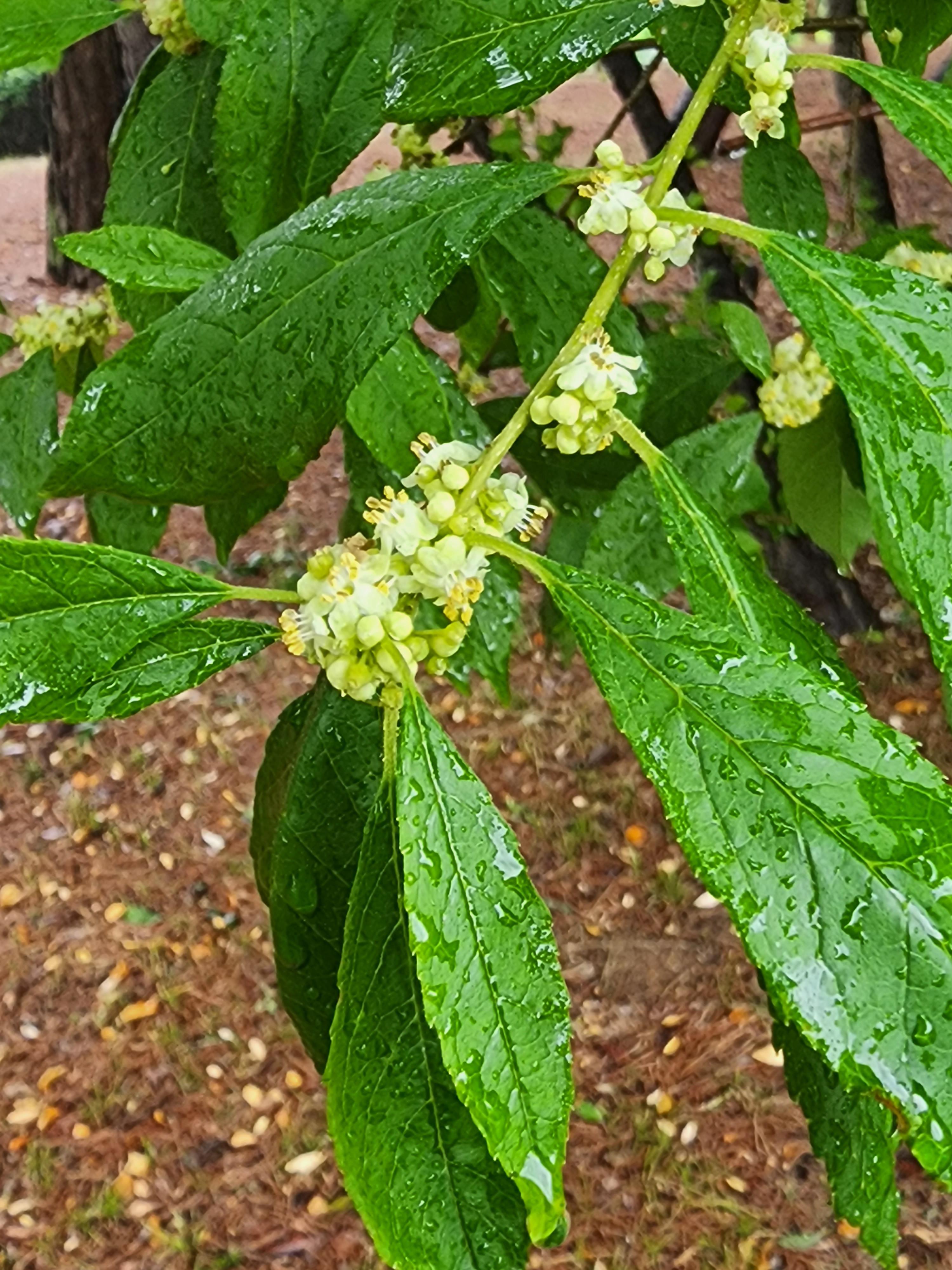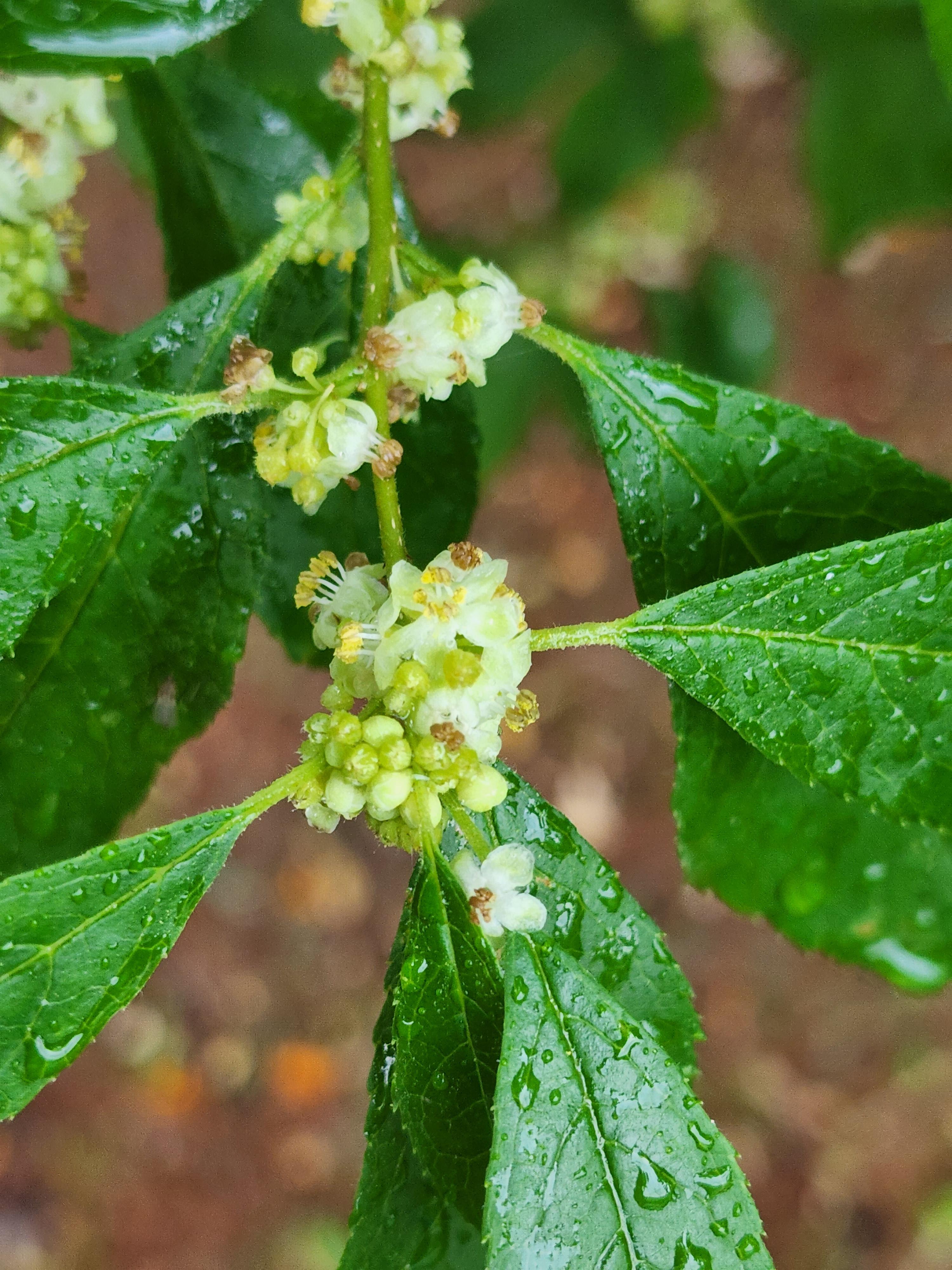낙상홍과 미국낙상홍
https://daehyo49.tistory.com/7807344
미국낙상홍(3)
https://daehyo49.tistory.com/7814053
미국낙상홍(2)
https://daehyo49.tistory.com/7808274
미국낙상홍(1)
https://daehyo49.tistory.com/7808091
미국낙상홍 겨울눈
https://daehyo49.tistory.com/7815837
학명: Ilex verticillata (L.) A. Gray
분류: 감탕나무과(Aquifoliaceae)
사진 : 2008.08.14 광릉수목원
아래: 2019.10.13 구리
이래: 2021.09.03 광릉수목원



아래 : 2022.06.15 동구릉




국립생물자원관 한반도의 생물다양성 설명
감탕나무과 감탕나무속에 속하는 낙엽 활엽 떨기나무로 높이 1~5m로 자란다. 잎은 어긋나며, 광택이 있는 녹색의 긴 타원형으로 길이 3.5~9cm, 너비 2~4cm이다. 잎끝은 급히 뾰족하고 물결 모양의 무딘 톱니가 있다. 잎 뒷면에 털이 많다. 꽃은 암수딴그루에 피는데 지름 5mm 정도이며, 5~8개의 흰색 꽃이 모여 핀다. 열매는 핵과, 지름 6~8mm의 붉은색 공 모양인데 10월경에 익는다. 종종 겨울까지 긴 가지에 달려 있다. 우리나라 전역의 공원, 아파트 등에 조경수로 식재한다. 북미 원산이며 미국, 캐나다 등에 분포한다. 가을~겨울철 붉은색 열매가 아름다워 조경수로 식재하거나 꽃꽂이 재료로 이용한다
Ilex verticillata, commonly called winterberry, is a deciduous holly that is native to eastern North America where it typically occurs in swamps, damp thickets, low woods and along ponds and streams. The form of this plant found in Missouri is Ilex verticillata var. padifolia, which occurs in “shut-ins”, granite rocky stream beds and sandstone bluffs in only 4 counties in the southeastern part of the state (Steyermark). This is a slow-growing, deciduous shrub with an upright-rounded habit that typically grows 3-12’ tall. In the wild, it often suckers to form large thickets or colonies. Elliptic to obovate, toothed, dark green leaves (2-3” long). Fall color is usually negligible, but in some years leaves may turn attractive shades of maroon. Relatively inconspicuous greenish-white flowers appear in the leaf axils in late spring. Flowers, if properly pollinated, give way to a crop of bright red berries (1/4” diameter) in late summer to fall. Berries are quite showy and will persist throughout the winter (hence the common name) and often into early spring. Berries provide considerable impact and interest to the winter landscape.
Genus name comes from the Latin name Quercus ilex for holm oak in reference to the foliage similarities (holm oak and many of the shrubs in the genus Ilex have evergreen leaves).
Specific epithet from Latin means whorled in reference to the arrangement of sessile fruits in pseudo-whorls around the stems.
Common name comes form the quite showy berries that will persist throughout the winter and often into early spring.
http://www.missouribotanicalgarden.org/PlantFinder/PlantFinderDetails.aspx?kempercode=d440












